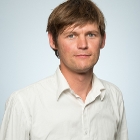Stay in the know on all smart updates of your favorite topics.
RESILIO and its business case.

It’s all about the money: A Smart RESILIO Blue-Green Roof might sound a little pricey. But is money all what counts? Are these roofs affordable? In this third part of the RESILIO blue-green roofs movie sequence we explain to you the overall value and benefits for the society and how to approach these in a financial matter. Maybe we have to broaden our view on how we assign value to an object and use these outcomes as a solution for financing. Daniel van den Buuse, PhD and Hans de Moel tell us all.
The interconnected city: Imagining our urban lives in 2050

Our cities are evolving. Fast. How can we ensure they are sustainable, liveable, and healthy?
Metabolic has developed a nature-inclusive, community-centered, and circular city's vision.
This vision of the "ideal" city is only one of many. What's your favorite? Please share the story, vision, book, podcast, or image that best represents the city you hope to live in, one day.
Shaping development in cities to combat climate change

Ever wondered what life would look like in a sustainable, regenerative city?
With cities occupying only 3% of the global land surface but contributing to 70% of emissions, positive change can have a big impact. Metabolic CEO Eva Gladek reflected on how we can all become city makers. In light of COP26, it might be time to refocus on our cities.
Ready to take action? Find out how in the link below.
Can Amsterdam even better support growth of its startup ecosystem?

This post is the third and last in a series of articles about the startup ecosystem in Amsterdam Delta (Amsterdam metropolitan region). The first dealt with the dual challenge for start-ups to become socially and environmentally sustainable and to empower employees to be entrepreneurial through shared leadership. The second one was a review of the strengths and weaknesses of the Amsterdam startup ecosystem by the authors of the 2021 Global Startup Ecosystems Ranking.
Weaknesses and strengths
The 2021 Global Startup Ecosystem Report revealed several weaknesses in the Amsterdam startup ecosystem, which – I accentuate - should not overshadow the city’s position of Amsterdam as the world number 13 startup ecosystem. In terms of market reach, the overall score is satisfactory (7), but the Amsterdam Delta startups are primarily focused on global markets and score low on the local market. In the field of talent, the overall score is more than sufficient (7), due to the quality of technology students and graduates, but their number is inadequate, resulting in high vacancies and salary costs. Partly related to this, the growth potential (scalability) of the Amsterdam startup ecosystem is also insufficient, due to a limited reservoir of experienced entrepreneurs. Overall knowledge success is assessed as poor (1!) due to the unsatisfactory number of life science patents.
Amsterdam Policy plan 2019 - 2022
Most of the underlying data of the 2021 report is from 2019 – 2021, a time frame that coincides with the start of the new policy plan for startups in Amsterdam in the period 2019 - 2022. The inventory of challenges in this report mirrors several weaknesses mentioned above. Looking at the future, the report states: We have reached a point where growth of the local ecosystem does not have to mean that the local government wants to encourage as many companies in Amsterdam as possible but encourages activity that adds value to the city in new ways. In the coming years, we must also lay the foundations for a more inclusive society, in which the local startup and scaleup ecosystem also plays a role. A step towards inclusiveness means significantly increasing the business sector’s ambitions for social responsibility. In other words, a focus on quality in general that is aligned with at least the first challenge in the first post I referred to above.
How cities can support their startup ecosystem?
Below, I discuss highlights from the policy report 2019 - 2022 within a broader vision of possibilities for municipalities to support start- and scale-ups, partly based on an earlier edition of a The Global Startup Ecosystem Report.
Financial support
According to the 2021Global Startup Ecosystems Report, the funding of new businesses is not a big problem in Amsterdam Delta, also because of the generous tax facilities(!) in the Netherlands. However, investment relies heavily on local investors and governmental grants: 54% of the capital flowing into the ecosystem comes from domestic sources, 25% from the rest of Europe, and just 21% from the rest of the world.
The City of Amsterdam subsidized the Innovation Center for AI (ICAI) at Amsterdam Science Park, requiring that at least 20% of its revenues will be reserved for innovative SMEs and startups.
While funding is not an overriding problem, Amsterdam can improve its coordinating role in providing financial support, as for example Seoul has done by the creation of the Dream bank, a one-stop agency for all financial matters.
Growth of markets
The market position of Amsterdam start- and scaleups can be improved, especially in the home market, but also internationally. Besides, every new startup must start from scratch by creating a market. An agency called Amsterdam Trade and Innovate has commissioned trade developers to organize domestic and international activities that support promising companies in clusters such as technology, health, life sciences, and creative industry.
Expanding the reservoir of entrepreneurs
Amsterdam focuses on women and young people with a migration background, most of whom never received tech-related training. Initiatives such as House of Skills, Action Plan W&T, House of Digital offer a range of technology-based courses to make up for these shortcomings, alongside startup schools such as BSSA, Growth Tribe and The Talent Institute.
In December 2020, the City of Amsterdam announced it will invest yearly US$ 856,500 in RISE, the Female Hub Amsterdam. There is a high demand in sectors such as artificial intelligence, blockchain, robotics, life science and energy storage, while relatively many university students in technology seem to prefer media studies and gaming and the fintech market is almost satorized. Studying will become more attractive by combining study and jobs and affordable (co-)housing and childcare options, both of which are both are seriously lacking.
In addition, the ‘Warm Welcome’ program aims to attract ambitious tech talent from abroad. Unfortunately, the pandemic has significantly reduced the influx of potential talent from abroad while market opportunities for innovative tech startups and scaleups were improving.
Campuses
Innovative and research-oriented start-ups prefer the proximity of comparable small and medium-sized companies in campuses. They also prefer locations in mixed urban environments. A campus offers space for complementary companies, large and small, and facilities to collaborate, such as shared laboratory spaces. Amsterdam develops urban innovation districts through regional development and transformation. These areas that can accommodate rapid growth and opportunity for clustering ‘anchor companies’, leading (knowledge) institutions, startups, scaleups, incubators and accelerators. The main areas are: West Innovation Park, Amsterdam Sciencepark, Marineterrein , AMC-Amstel III and VU-Kenniskwartier/Zuidas.
Participation in the network of incubators and accelerators
Startups and scaleups need support. Incubators help companies to settle, accelerators help them to grow steadily. One of the best things any city can do is actively participation in these incubators and accelerators. They can become a one shop-stop for all prospective participants, providing virtually all the support start- and scaleups need. 31 of the 89 incubators and accelerators in the Netherlands, are active in the Amsterdam metropolitan area. A rich pallette of incubators and co-working spaces such as TQ, WeWork, Spaces, Startup Village, Rent24 and B.Amsterdam have been set up. Accelerators are Rockstart, Startupbootcamp, Fashion for Good, ACE and Collider.
Within an incubator or accelerator, the municipality can be primary responsible for legal matters, offering work- and living spaces (initially for free and later rented out at attractive rates), trade missions and procurement.
Internships
In some cities, startups can practice aspects of social and environmental sustainability in public administration. An example is the Startup in Residence program that started in Amsterdam and has now been spread over 20 other Dutch cities, regional governments, and ministries. The program is open to both Dutch and foreign entrepreneurs. Professional coaches provide intensive training and support. Workspace is available too. Under certain conditions, local, regional, and national governments become launching customers or partners. A report provides a detailed overview of the program in Amsterdam and its impact on the participants and the community.
Taking care of starters in general
Only a small but previously unknown part of all starters becomes a startup. Moreover, the number of starters outsizes that of startups and some can become valued companies too In the Netherlands, each year more than 100.000 starters are registered with the Chamber of Commerce.
Short evaluation Amsterdam policy plan 2019 - 12022
I doubt whether the current Amsterdam policy on start- and scaleups will result in a better ranking next year, also because in many cities startup ecologies are growing faster. Personally, I believe that consolidating a position in the top 20 is the best possible and still admirable result. This certainly applies if Amsterdam can achieve its ambitions in the field of qualitative rather than quantitative growth. Amsterdam wants to become an inclusive community and the first circular city in the world. The city wants that start- and scaleups becoming forerunners in reaching these objectives. I am partly disappointed in the content of the policy report 2019 - 2022 regarding this ambition. Indeed, becoming a more inclusive community is reflected in supporting the growth of the number female entrepreneurs. However, I looked in vain at policies encourage activity regarding developing start- and scaleups that add value to the city in new ways for instance contributing to the development of the circular economy. These businesses will make the difference in the future startup ecosystem.
I will regularly share ‘snapshots’ of the challenge of bringing socially and ecologically sustainable cities closer using technology if useful. These posts represent findings, updates, and additions to my e-book Humane cities. Always humane. Smart if helpful, chapter 4 in particular. The English version of this book can be downloaded for free below.
Introducing Innovatie Partners for innovative entrepreneurs

The City of Amsterdam launched a platform for entrepreneurs who want to collaborate on innovation with the public sector.
If you want to work with government and other large organisations, you need to apply for tenders and grants. These application procedures are often complex. Using clear information and useful checklists, Innovatie Partners makes tenders and grants accessible for small entrepreneurs, such as startups, scale-ups and MKB.
On the platform
- Projects from organisations such as Gemeente Amsterdam, the Metropole Region Amsterdam (MRA) and Startup in Residence. Take a look at past and current projects (in Dutch).
- Road maps of how to apply for your tender or grant of choice.
- Explainers on what tenders and grants are and how they work, such as a glossary of unavoidable jargon (in Dutch).
- Detailed instructions and screencasts of how to fill out complicated forms (in Dutch).
Breaking news for Amsterdam: The Global Startup Ecosystem Report 2021 is available

In the recent past, the value of startups in Amsterdam Delta (Amsterdam metropolitan region) has taken a giant leap. In 2015, Amsterdam startups were valued at $11.1 billion. Today, Europe's number 3 ecosystem is worth $83.3 billion. The extraordinary success stories of Adyen and Takeaway have been a major contributor to this success, but its base is much broader. On the annually published Global Startup Ecosystem ranking Amsterdam Delta rose from the 19th place in 2015 to 12th place in 2020. Everyone was curious about the 2021 ranking. Well, as the table shows, Amsterdam Delta has been overtaken by Paris and Tokyo, but only lost one place due to a significant drop in Stockholm.
The value of rankings is easily overestimated. However, the value of startups should not be underestimated. More than 30% of the 4000 startups in the Netherlands are located in the Amsterdam metropolitan region. Together, the Dutch startups have created more than 100,000 jobs and are responsible for 60% of the annual job growth.
Globally, 2020 and 2021 were amazing years for startups as the pandemic fueled technology. According to the Global Startup Ecosystem Report 2021, Internet capacity increased by 35% and global broadband traffic by 51%. Consumers bought 30% more food online. Global venture capital funding nearly doubled to $288 billion in the first half of 2021, compared to the first half of 2020. Startups have benefited from the explosive technology market, supported by significant government support. Following China and the US, the European Union has been generous to startups, and the same goes for its member states. The Dutch government offers tax credits to innovative companies and environmentally friendly investments. The city of Amsterdam promotes startups that support inclusive growth and diversity, for example by subsidizing female entrepreneurs.
The Amsterdam Delta startup ecosystem can be characterized as vibrant. Still other ecosystems in the world are growing faster, including those in some European cities. In the global top ten emerging ecosystems, we find Copenhagen in second place and Barcelona, Madrid, and Zurich in places 5, 8 and 9.
To detect possible vulnerabilities in the Amsterdam Delta startup ecosystem, analyzing of success factors of the 30 highest-ranked ecosystems in the report is informative. In terms of performance, Amsterdam's composite score is in a middle position (6 out of 10 points). In terms of funding, the position is good (8). In terms of market reach, the overall score is satisfactory (7): The Amsterdam Delta startups are primarily focused on global markets and score low on the local market. Like most European ecosystems, Amsterdam Delta scores excellent (9) in connectedness, which is related to its strength on the global market. In terms of talent, the overall score is satisfactory (7), but the components differ considerably. The quality of technology students and graduates is good, but their number is insufficient, resulting in high salary costs. The scalability of the Amsterdam startup ecosystem is also insufficient, due to a lack of experience, which keeps many startups small. The overall knowledge success is assessed as poor (1) because the number of life science patents is disappointing.
When assessing the success factors, it should be considered that the population of Amsterdam Delta is about 10% of the population of London, and in this perspective the need to improve the global 13th place is not urgent. On the contrary, understanding why the Amsterdam Delta is performing so well is more relevant than looking for opportunities to improve it.
The explanation of Amsterdam's success has its roots in the fundamental strength of the Netherlands as a whole, which has at least ten other vibrant startup ecosystems. Against this background, one might be curious about the Global Startup Ecosystem ranking of the Randstad, including Eindhoven as a whole. According to the report, the strength of the Netherlands is its well-educated population, international orientation and English proficiency, excellent infrastructure, an 'extremely high quality of life' and business-friendly laws. Amsterdam is also the headquarters of many international companies, a large pool of potential startup founders.
In a next post, I will focus on Amsterdam's policy towards startups and evaluate whether a higher ranking is within reach or whether more qualitative objectives are preferable, taken into account the considerations in a former post on the Amsterdam Smart City website.
I will regularly share ‘snapshots’ of the challenge of bringing socially and ecologically sustainable cities closer using technology if useful. These posts represent findings, updates, and additions to my e-book Humane cities. Always humane. Smart if helpful. The English version of this book can be downloaded for free below.
Building back better with a systemic approach

As the world grapples with vaccinations, variants, and how to return to "normal", it’s a good time to reflect on whether or not we are fully equipped to prevent future shocks.
Building true resilience means addressing the systemic issues that make our world increasingly fragile, by understanding the deeper structures and mental models at the root of a problem to create lasting solutions.
Check out our article done by Metabolic last year about building back better.
Reimagining our relationship with land through regenerative agriculture.
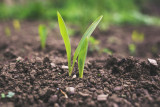
The term regenerative agriculture is popping up more and more often in news and articles. Often mentioned as the key to agricultural green transition, important for carbon sequestration purposes… but what is it exactly?
Regenerative farming, or farming in line with nature, also known as restorative agriculture or eco-agriculture, is a nature-based solution, and it is significantly different from organic farming.
Learn more from this article.
How to create a sustainable bioeconomy
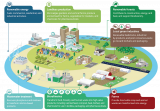
Today the bioeconomy is everywhere: We see it in the clothing we wear, the packaging that comes to our house daily, the house we live in, the food we eat, and the energy that fuels our life.
For the bioeconomy to truly be sustainable and circular, it must meet certain conditions:
• Using fundamentally renewable biological feedstocks
• Maximizing the varied types and cycles of biological resources
• Contributing to the biological cycle
Learn more from this article.
Startups: Between the Curse of Becoming a Taker and the Prospect of Being a Maker

For centuries, entrepreneurship was linked to art and craft and rewarded by personal fulfilment, satisfied customers, and a good life. The term entrepreneur is still associated with giving direction, shape and content to new activities based on personal motivation and skills and thereby creating socially approved value. A description that applies to the self-employed, business entrepreneurs, franchisees or intrapreneurs and includes both commercial, institutional, and artistic activities.
However, there are two problems. Overcoming them opens the way to become a better business.
The plunder of the earth
Nobel laureate Joseph Stiglitz has warned that the creative power of entrepreneurship can easily become destructive. A 'maker' becomes a 'taker' once creating value becomes making money in the first place. Indeed, for centuries, companies have robbed resources around the world, destroyed nature, traded millions of slaves and exploited domestic workers, creating the divide between rich and poor countries.
The creative power of entrepreneurship can also be aimed at sustainable prosperity, for their employees, the country, and the world. In that case, the “purpose” of a company precedes the pursuit of profit. Unfortunately, still a minority of all companies are moving in this direction while others pretending.
The decline of engagement and passion within the workforce
There is more. In developed countries, the blatant exploitation of labour has disappeared. Instead, the majority of employment relegates into low strain jobs. Research by Gallup and Deloite has shown over consecutive years that over 64% of all employees worldwide are not engaged or passionate. Find John Hagel explain this in a short video. The reason is clear. 20th century companies have organized their production according to principles of scalable efficiency and have top-down planning and control. Room for initiative is therefore neither expected nor desired. Moreover, detailed protocols and regulations limit employment for people at a distance from the labour market.
In a rapidly changing world, companies must be adaptive and innovative. They therefore need flexible, interdisciplinary teams with a high degree of self-government and less pay differentials. According to recent research in 17 countries, this type of organizations (8%) outperforms in all respects.
Summarizing, to become a better business requires a double challenge:
· Replacing the dominance of the pursuit of money with a social and environmental purpose.
· Mobilizing the entrepreneurial and other capacities of their whole work force by forms of self-organization and shared leadership.
Why focussing on startups?
As only a limited number of companies meet these conditions, employees consider starting their own business. In the US alone, approximately two million workers give up well-paying jobs every year and become self-employed. 127,000 starters were registered in the Netherlands in 2018. Of them, only a minority will become a startup, which means that they will successfully commercialize a promising technological innovation and grow rapidly on an international level.
Start-ups are potential engines of growth and innovation. In the US, their steady growth is compensating for job losses in the rest of the economy. Dutch startups created 20.000 of jobs in 2018 and 2019. A recent reportoffers excellent documentation of the identity, growth and potential of the 4,311 Dutch startups in 2019, most of which have fewer than 10 employees. 34% of Dutch startups can found in the Amsterdam metropolitan area.
The hope is that start-ups will rise to both challenges by nurturing their social and environmental purpose end fueling the commitment and passion of each employee, and thereby become a better business.
Yet, like any other businesses, startups risk becoming takers rather than makers, trading their social and environmental purpose for the pursuit of money and losing the engagement and passion of their employees. Fortunately, they can prevent this.
Eleven ways to become or stay a better business
1. Embrace self-organization and shared leadership.
2. Involve all employees in the continuous strengthening of the social and environmental purpose of the company.
3. Enable all employees to become shareholders or even better co-owners.
4. Cherish diversity within the employees.
5. Secure shares in a foundation while enabling shareholders to support the purpose of the company.
6. Cap the profit to a level that guarantees the continuity of the company.
7. Ban greed, cancel bonuses, or at most pay a limited and equal allowance to all employees.
8. Place surplus profits in a foundation that spends money in accordance with the purpose of the company.
9. Being a fair taxpayer who refrains from tax avoidance practices.
10.Create a supervisory board to monitor the purpose of the company.
11.Focus the founder/director/CEO role on monitoring the purpose of the company and the commitment of all employees and on fueling the discussion on how to deal with changing external conditions.
Rapid societal changes require a reinventing the concept of entrepreneurship. Because of their flexibility and commitment, startups are apt to embrace the dual ambition of pursuing a social and environmental purpose and of mobilizing all employee’s engagement and passion.
My next post will look at how cities can help start-ups to settle, grow and become better businesses. The history of entrepreneurship, its growing distance from ‘makership’ and its possible revival by start-ups is documented in chapter 4 of my e-book Humane cities. Always humane. Smart if helpful. The English version of this book can be downloaded for free below.
Tools for circular construction

The impact of circular principles on the construction sector will be large and beneficial because buildings are responsible for more than 50% of the total use of materials on earth, including valuable specimen such as steel, copper, aluminium and zinc.
The picture above – the interior of the Circle pavilion of the ABN-AMRO bank in Amsterdam is an example of a new building that uses as many existing components as possible and new components of the building are designed to be reused. Think of:
• 1200 m2 of wooden floors
• Partition walls of a demolished building
• 16.000 garments of employees for isolation purposes
By circular construction we mean designing, building and demolishing a building in such a way that, in addition to the high-quality reuse of materials, justice is done to sustainability ambitions in the field of energy, water, and biodiversity and ecosystems.
New materials are often more expensive than new ones
In case of demolishment, nowadays many components are already reused, but at a very low level, for instance concrete and stones as the foundation of new roads. Apart from the limited necessity to construct many new roads, this type of recycling destroys the intrinsic quality of materials and does not diminish the use of new materials. The biggest problem is that recycled materials are often more expensive than new ones.
Evidently, progress can be made by planning, designing, developing, and building circular buildings. A number of options are mentioned below.
Dedicated urban planning
Challenges for planning are the use of inner-city vacant land and issuing mandatory requirements regarding the construction of new buildings, for instance the use of less cement, glass and steel, the mandatory application of a certain percentage of reused materials, and becoming energy positive or at least energy-neutral. Switching to sustainable timber is an option for 90% of homes and 70% of offices being built.
Mandatory reuse of existing components
Reuse of existing materials means that glass is reused as glass and concrete pillars as pillars. The same applies to doors, frames, carpets, wall-cladding materials and so on. To start with, after demolishment all materials must be selected, cleaned, registered, and stored in new-to-develop warehouses. A materials passport, which contains an overview of all materials and components that are used to construct of a house or building, is a useful tool as well. The obligation to reuse a large percentage of existing components has far-reaching consequences for the design and construction of new houses.
Industrial production and 3D printing
Construction of components in factories, deploying industrial processes, will reduce costs by 30 percent and the delivery time by at least 50 percent. In 2014, the Chinese company WinSun printed and assembled ten houses, each 195 square meters, in 24 hours, for an amount of €5,000 per house[1]. The company used 30 - 60 percent less material than in traditional construction. The “ink” for their 3D printers is a mixture of dry cement and construction waste. WinSun plans to open 100 recycling plants in China to convert waste into cost-efficient ink. This video below demonstrates the printing activities of WinSun
Sharing space
The size of apartments will decrease, partly due to costs, but also because of the presence of shared guest rooms, lounge areas and terraces for working and socializing, spaces for washing and drying laundry. The need for office space will decrease rapidly due to sharing space and working home. Already now, IBM has only one desk available for 12 employees. Given the presence of 300,000 employees, this has led worldwide to savings on real estate of around € 1 billion in the past 10 years.
Modularity and durability
A key barrier for better use of floor space is the lack of flexibility in the design of buildings and room configurations. A modular design, which provides for easy replacement of partitions and placement of complete pre-fab units (kitchens and bathrooms, walls, and roofs as well) facilitates adjustments in case of new construction or as the use of a building changes. DIRTT builds interior components that are modular and standardized and offer maximum interchangeability in both existing and new buildings[2]. This video gives an impression of the production and application of these flexible and inexpensive solutions.
Forget new construction at all
Anyway, a first step is more efficient use of existing buildings and houses.
As families become smaller and offices need less space, existing space becomes underused. Many thousands of one family houses can be transformed in apartments. Well-thought adjustments to the lay-out of existing houses and buildings can improve their efficiency without reducing their functionality and amenity. Look here for inspiring examples.
I will regularly share with you ‘snapshots’ of the challenge to bring social and ecological sustainable cities closer using technology if helpful. These posts represent findings, updates, and supplements of my e-book Humane cities. Always humane. Smart if helpful. The English version of this book can be downloaded for free below.
Note from ASC: What are your thoughts on this? Let Herman know bellow.
Gezonde stad: slim, samen en in samenhang

Een gezonde stad is vitaal, veerkrachtig en toekomstbestendig – zowel maatschappelijk als economisch. Maar vanzelf gaat het niet. De druk op de stad is groot en de situatie is urgent, want er moet veel en liefst tegelijk: meer woningen, minder lawaai, schonere lucht, minder hittestress, een lager energiegebruik. Dit lukt alleen als we het slim, samen en in samenhang doen.
En er is goed nieuws: al die transities scheppen niet alleen verplichtingen, maar ook geweldige mogelijkheden. Zo biedt data science kansen om tot goede plannen en oplossingen te komen, om deze te visualiseren en communiceren én om participatie en besluitvorming te organiseren. In bijgaand artikel uit Binnenlands Bestuur geeft mijn collega Jan de Wit een overzicht van kansen.
Regional Green Deals presented at EU 100 Intelligent Cities Challenge and EU Blueprint for Local Green Deals published

The Regional Green Deals of the Metropolitan Region Amsterdam were presented by Frank Weerwind, Mayor of Almere at the Mayor’s Summit of the 100 Intelligent Cities Challenge. Together with the Amsterdam Economic Board and Amsterdam Smart City, the Metropolitan Regio Amsterdam acts as a mentor region for the 100 European cities who participate in the challenge to work together on their ambitions for the digital and green transition.
For cities that want to work with their stakeholders on ambitious green deals the European Commission now published a practical guide titled Local Green Deals, A Blueprint for Action.
Find the speech by Mayor Weerwind below
22 June 2022
Honorable guests, ladies and gentlemen,
It is a great pleasure and honor to me to be invited to the Mayors’ Summit of the 100 Intelligent Cities Challenge, and I am very excited to share with you some of my thoughts on the green and digital – or twin – transition in the cities and regions of Europe. I also would like to express my gratitude to the European Commission and the Committee of the Regions for organizing this event on Green Deals and for launching the 100 Intelligent Cities Challenge. By doing this, you recognize the power of cities in the twin transition, you see the need for support for cities to make this transition happen and by this programme, you facilitate the network that cities can create.
My own city is Almere, a new town near Amsterdam and just 45 years old: it was created from scratch on reclaimed land from the sea, and is now a vibrant city with over 215.000 inhabitants. It is a city without ancient history and traditions, but a young city with a strong pioneering spirit, where there is space to experiment and to test innovative solutions in living labs. Our living lab approach has resulted in various circular and sustainable energy innovations in the city, for example: a smart thermal grid for the new Hortus neighborhood. The living lab approach has also led to the choice for Almere as the location for the World Expo on Horticulture in 2022, the Floriade, which will showcase innovations on greening, feeding, healthying and energizing cities, under the umbrella off Growing Green Cities. The twin transition is evidently a core aspect in this event. I will take this opportunity to invite you all to visit the expo next year in Almere.
But this morning I represent not only Almere but the Metropolitan Region Amsterdam, a region consisting of 32 municipalities and two provinces. An economically strong region in Europe with a high quality of life, an international hub with a huge amount of talent, knowledge, innovation and businesses. The Metropolitan Region Amsterdam is one of the so-called mentors in this programme, because we believe in sharing our vision with other cities in terms of knowledge and innovation, but, please, let me assure you that our ‘success’ story has been established, due to knowledge and innovation coming from the cooperation between cities. My aim for now is to continue the dialogue with you on the issues that we are sharing together.
As many of your regions, our region, with an economy highly defined by tourism and services industries, was hit hard by COVID-19. Therefore, we decided at an early stage to investigate, together with knowledge institutions and the business sector, how we could aim for green recovery. We felt more was needed, besides the required regional energy strategies, investing in our energy backbones, which nowadays also include a hydrogen-infrastructure, and ongoing European energy transition projects such as Atelier. We asked the Amsterdam Economic Board to organise this investigation, since they act independently and aim for connecting the companies, research and education institutes and governments in our region. Facing such an unprecedented crisis, we did not want to do this as governments alone, but together with all relevant stakeholders. And, my fellow Mayors, that is a lesson I want to share with you: don’t do it alone.
Based on interactive stakeholder sessions and scenario-planning, we started a trajectory towards green recovery, resulting so far in 3 Regional Green Deals and with these deals, extra focus on skills for sustainable jobs. The Green Deals are: making the textile value chain circular, developing the region as a innovative bicycle hotspot and -for the Netherlands this is really innovative- increase the amount of new-build houses in timber to 20% of the total of new residential building activity.
As a result of those Local Green Deals, we invest faster and more effectively in the economy of today and tomorrow. The aim is to anticipate on changing jobs and the necessary skills, to fill existing and future vacancies and to achieve greater well-being and prosperity in the long term. And that is what we wish for the whole of the European Union.
To conclude, I would like to compliment you with your efforts in the 100 Intelligent Cities Challenge. And please feel free to take a closer look into the work of the Metropolitan Region Amsterdam and to learn, copy the elements that would benefit you, but also to bring your knowledge to us, for example via our online platform Amsterdam Smart City. That way, together we advance in the European twin transition. And move forward to the digital, inclusive and sustainable future of our cities.
Data Dilemma recap: Focus on the right data when measuring Circular Economy

As a city Amsterdam has ‘ambitious ambitions’ Jorren Bosga (city of Amsterdam) stated in his opening, as he was referring to Amsterdam’s Circular Economy (CE) Monitor. He did this in another edition of Data Dilemma’s. Here - in collaboration with Datalab Amsterdam - the biggest data-related hurdles of the great public transitions get addressed in a discussion between a panel of (international) experts and the audience.
This time, our experts talked about their experiences, plans and struggles on monitoring the circular economy. Jorren shared the cities ambition to reduce the use of primary abiotic resources (not derived from living organisms) by 50% in 2030 and by 100% in 2050. To gain insights into the progress towards the city’s top-level circular economy targets, Jorren expressed the need for both high coverage, as well as high detail of the data collected. Characteristics that seem almost mutually exclusive.
Data with high coverage and detail
A top-down approach, like Amsterdam’s collaboration with the Central Bureau of Statistics, leads to a broad general insight, but lacks detailed data of materials and is
subjected to assumptions. Working bottom-up will grant you more detailed data, but only on a small part of the system. To do the latter, Amsterdam partners with sector-wide reporting organizations or large companies, for instance in monitoring company-level waste processing.
What’s being reused and repaired?
Next up was Nina Lander Svendsen from PlanMiljø to talk about their multinational
collaboration study on the state of the circular economy in the Nordic countries. Like Amsterdam, she urged the need for more data on the ‘inner circles’ of CE, containing the reuse and repair of products and materials. Being able to influence the lifetime of materials will be most interesting to policy makers. Political strategies on stimulating the circular economy allow more specific collection of data and monitoring, in contrast to just generally gathering data. Having a stronger correlation between the circular transition and the expected impacts, will increase the influence of policy changes.
Focus on measuring what you really want to know
The call for focus on the things you really want to measure was underlined by Luc
Alaerts, researcher at the KU Leuven and Leuven 2030. It is easy to look at what you can do with the data that is available, but it contains the risk of creating a false sense of control. If policy makers only look at a small portion of the system, that portion will get a disproportionate amount of influence. It is therefore important to also focus on the data that is not available yet. A city can aim for a high amount of registered users of a car sharing-app, but if that means that people are grabbing a car instead of a bike
or using public transport, it’s debatable if it has had the effect they were
aiming for.
Importance of dialogue with stakeholders
Also, Luc touched upon the importance of dialogue with stakeholders in collecting data. Lowering reluctance by making them part of the project, focusing on the value
it creates and gaining trust before you ask for data seems the way to go. In
Leuven, they showed this in their materials bank - a project where construction
materials get a second life.
Wanted to join the session, but couldn’t? Or do you want to rewatch that one particularly good part of the discussion? Check out the recording anytime you like.
Meet the speakers of Data Dilemma’s event: “Measuring the Circular Economy”

A tool that gives strategic insights in the materials that are being used in the city and how we use them. That’s what the Monitor Circular Economy - created by the city of Amsterdam - does. And it doesn’t stop there.
What we buy, build & throw away has significant social and environmental impact abroad. And since the city has adopted the Doughnut Economics framework, these impacts need to be quantified and addressed.
Introducing Our Speakers
We’re looking forward to discussing different ways to include this information in the data during this session with our three talented speakers on June 3rd, 16:00 - 17:15. It’s in English and (also) aimed at (inter)national city-to-city knowledge exchange & collaboration.
Jorren Bosga – City of Amsterdam
Jorren has quite recently begun working at the city of Amsterdam, but has quite a background in data science in sustainability and monitoring the impact of sustainability interventions. At the city of Amsterdam, he is now working on the development of their Circular Economy Monitor and dashboard.
Nina Lander Svendsen – PlanMiljø
Nina has a master in Political Sciences and is specialised in Environmental and Climate policies. Since she has joined consultancy platform PlanMiljø, she has worked on policy analyses and strategies for topics in the Circular Economy and UN Sustainability Goals, where she also focuses on monitoring systems.
Luc Alaerts – KU Leuven / Leuven 2030
Luc works at the KU Leuven in the department of Sustainable Material Management. He’s also part of the expert group of Leuven 2030, which is focused on making Leuven a climate neutral city. Luc works on the knowledge and monitoring of both sustainability pilots as well as evaluating and optimizing organisational practices.
Metropolitan Mobility Podcast with Karen Vancluysen (Polis Network)
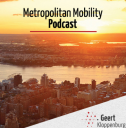
How can local governments deal with (technological) innovations? Listen to the #podcast with Karen Vancluysen of POLIS Network: https://bit.ly/mobilitypod
We zijn nog niet zo goed in afval scheiden
De HvA start project BASSTA naar gedragsinterventies om huishoudens ervan bewust maken of ze op de juiste manier hun afval weggooien en hoe dit te verbeteren.
Chipszakken bij plastic afval, theezakjes bij gft? Afval scheiden wordt niet altijd op goede wijze gedaan, en überhaupt nog te weinig. Dat is zonde, want goed gescheiden afval biedt kansen voor recycling en andere circulaire toepassingen. De Hogeschool van Amsterdam (HvA) start met het project BASSTA een onderzoek naar het verbeteren van het scheidingsgedrag van huishoudens, met een focus op de stedelijke omgeving.
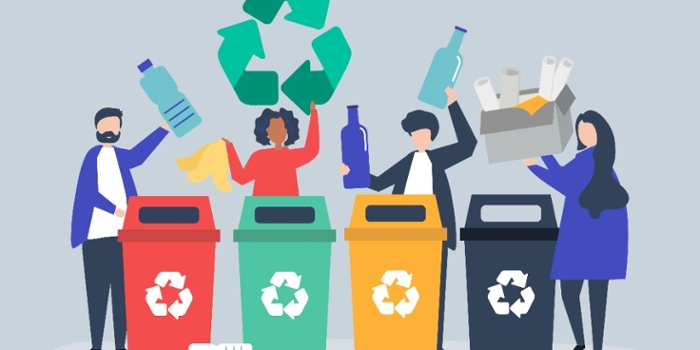
We willen in 2050 volledig circulair zijn. Voor de transitie naar een circulaire economie moet het afval dat ontstaat goed herbruikbaar zijn als grondstof voor nieuwe producten. Een goede scheiding van het afval is een belangrijke voorwaarde hiervoor. Met ongeveer 8 miljard kilo huishoudelijk afval per jaar in Nederland zorgt elk percentage betere scheiding voor enorme resultaten. BASSTA behandelt daarom zowel het verhogen van de scheidingsgraad (de hoeveelheid afval die gescheiden wordt), als het verlagen van de vervuiling van de gescheiden afvalfracties (papier, gft, plastic). Om dat te realiseren, is gedragsverandering nodig.
Automatisch gedrag onder de loep
Mensen gooien hun afval vaak op dezelfde, veelal onbewuste manier weg. BASSTA richt zich daarom op dit automatisch gedrag, vertelt projectleider Maarten Mulder. ‘Door het automatisch gedrag onder de loep te nemen, vormt dit project een belangrijke aanvulling op het bestaande onderzoek naar gedragsinterventies. De nieuwe interventies die het onderzoek opleveren, moeten helpen om het gewoontegedrag te onderbreken en huishoudens ervan bewust maken of ze op de juiste manier hun afval weggooien. Ook voor de mensen die nu nog niet (graag) afval scheiden. Met een duidelijke uitleg hoe en waarom deze interventies werken, is het streven dat zoveel mogelijk Nederlandse stedelijke gemeenten hiermee aan de slag gaan. Zo kunnen ze betere bronscheiding realiseren.’
Dagboek van huishoudens
De interventies worden ontworpen en getest in nauwe samenwerking tussen industrieel ontwerpers en gedragspsychologen van de HvA. Mulder: ‘Middels dagboekstudies bij bewoners thuis analyseren we op welke momenten het automatisch gedrag veranderd kan worden. In de zomer verwachten we de resultaten. Hiermee kunnen we de ‘customer journey’ schetsen: het in detail weergeven van het proces van afval weggooien. Vervolgens ontwerpen we de gedragsinterventies die we gaan testen in verschillende steden. Dat zal begin 2022 gaan gebeuren.’
Samenwerking binnen de HvA
BASSTA is een samenwerkingsproject van Centres of Expertise Urban Technology en Urban Governance and Social Innovation. De verbonden lectoraten Circulair ontwerpen en ondernemen & Psychologie voor een Duurzame Stad onderzoeken en ontwikkelen innovaties om tot een circulaire economie en maatschappij te komen.
Diverse praktijkpartners zijn bij het onderzoek van belang en betrokken. Gemeenten zoals Amsterdam, Rotterdam en Utrecht zijn aangesloten om met bewoners de interventies te testen. Ook helpen stuurgroepen als Rijkswaterstaat en branchevereniging NVRD het onderzoek verder. Daarnaast brengen ROVA, De Afvalspiegel en Giraf Results expertise in rondom afvalinzameling, en verspreiden Milieu Centraal en VVM de resultaten.
Heb je vragen of wil je meer weten? Benader projectleider Maarten Mulder. En blijf via de projectpagina van BASSTA op de hoogte van de ontwikkelingen.
dhr. Ir. M. Mulder
Projectleider en onderzoeker rondom afval, duurzaamheid en de circulaire economie
m.mulder3@hva.nl | T: 0611391085
Ga naar detailpagina
Meer informatie
- Project BASSTA
- Centre of Expertise Urban Technology
- Centre of Expertise Urban Governance and Social Innovation
- Lectoraat Circulair ontwerpen en ondernemen
- Lectoraat Psychologie voor een Duurzame Stad
Metropolitan Mobility Podcast: Het ondergeschoven kindje van de mobiliteit: Lopen!

Meer gaan wandelen door #corona? Ankie van Dijk (Directeur Wandelnet) en stedenbouwkundige Annemieke Molster over het ondergeschoven kindje van de mobiliteit: Lopen! #podcast: https://bit.ly/mobilitypod
Ben jij een fanatieke wandelaar?
Laat ons weten wat je van de podcast vindt!
Amsterdam Donut Coalitie Meetup #5
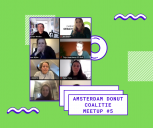
Op 15 april om 16.00 is het tijd voor de 5e online editie van de Amsterdam Donut Coalitie Meetup. Tijdens de online meetup delen we updates en leren we elkaar kennen. Je krijgt ook de kans om via break-out ruimtes dieper in te gaan op donut thema's (donut bedrijven, donut onderwijs, donut plekken, donut beleid en wetgeving etc). Wil je een steentje bijdragen aan de transitie naar een sociaal rechtvaardige en ecologisch veilige maatschappij? Meld je dan aan via de link.
AGENDA
16.00 Welkom & agenda
16.05 Wat is de Amsterdam Donut Coalitie
16.10 De donut in de gemeente Amsterdam | Salome Galjaard
16.20 Q&A met gemeente Amsterdam en community
16.35 Oproep via Scholars United for a Sustainable Amsterdam
16.40 Break-outs rond donut onderwijs & onderzoek + donut plekken
17.00 Recap Plenair
17.10 Einde
Siemens Mobility bouwt landelijk MaaS-platform Rivier NS, RET en HTM zetten in op digitale ontsluiting van heel Nederland
NS, RET en HTM laten
hun landelijke MaaS-platform bouwen door Siemens Mobility. Het platform maakt het mogelijk om een reis met verschillende vervoermiddelen in één keer online te plannen, boeken en betalen. RET-directeur Maurice Unck namens Rivier, de joint venture van de drie partijen: “Na de pandemie verandert ons reisgedrag.
We reizen, werken en leren flexibeler: in tijd, plaats en keuze van het
vervoermiddel. Daarom investeren we juist nu in de beste reismogelijkheden voor de consument. We willen de drempel verlagen om een reis met meerdere
vervoermiddelen eenvoudig digitaal te plannen, boeken en betalen. Daarom roepen
we alle Nederlandse mobiliteitsaanbieders op om zich aan te sluiten.”
Naar verwachting zien
in het najaar de eerste apps van MaaS-providers het licht waarmee consumenten
hun multimodale reis in heel Nederland kunnen plannen.
Stel: je wil
graag bij een vriend, een klant of iemand anders op bezoek en gemakkelijk weten
hoe je daar het snelst bent en hoeveel dat kost. Hoe krijg je dat voor elkaar?
Je kunt kijken of er files zijn, een deelauto boeken, uitzoeken of het OV goed
werkt, nadenken over de fiets als alternatief en meer. Maar een reis
samenstellen waarbij deze verschillende vervoermiddelen van
mobiliteitsaanbieders optimaal worden ingezet, moet je nu nog helemaal zelf
doen. Dat is best een complexe puzzel die veel mensen liever overslaan. Terwijl
juist de combinatie van vervoermiddelen je als reiziger veel tijdwinst en
bewegingsvrijheid oplevert. Daarnaast helpt zo’n combinatie onze infrastructuur
zo goed mogelijk te benutten.
Reisopties in één
keer zichtbaar, één keer afrekenen
Met het nieuwe platform
is het straks voor consumenten veel makkelijker om gebruik te maken van
beschikbare vervoermiddelen. Het platform kan verbonden worden met al bestaande
apps van MaaS-providers zoals de NS, RET, HTM. Maar het platform kan ook andere
bestaande apps en nieuwe apps bedienen. De snelheidswinst zit ‘m erin dat alle
afzonderlijke vervoersmogelijkheden op de route in één keer inzichtelijk
worden. Maak je bijvoorbeeld graag gebruik van een deelscooter of reis je
liever per trein of metro? De app houdt rekening met ieders persoonlijke
voorkeuren en past het advies daarop aan. Bovendien is er geen gedoe met
verschillende vervoersbewijzen en de betaling ervan: ook dat regel je heel
makkelijk vanuit je favoriete app of website.
Toegankelijk voor alle mobiliteitsaanbieders:
De initiatiefnemers
willen de mobiliteitsdiensten van zoveel mogelijk aanbieders in Nederland
samenbrengen. Of het nu gaat om taxibedrijven of deelfietsen, e-scooters of
zelfs particuliere automobilisten. Hoe meer partijen hun diensten aanbieden,
hoe beter het écht mogelijk wordt om heel Nederland digitaal te ontsluiten.
Aanbieders profiteren van het gemak van eenmalig laagdrempelig aansluiten en
hebben direct een landelijk bereik te met een platform dat doorontwikkeld is om
de klantbeleving te optimaliseren. Daarom roepen de initiatiefnemers alle
aanbieders op om zich aan te sluiten.
Stay up to date
Get notified about new updates, opportunities or events that match your interests.
